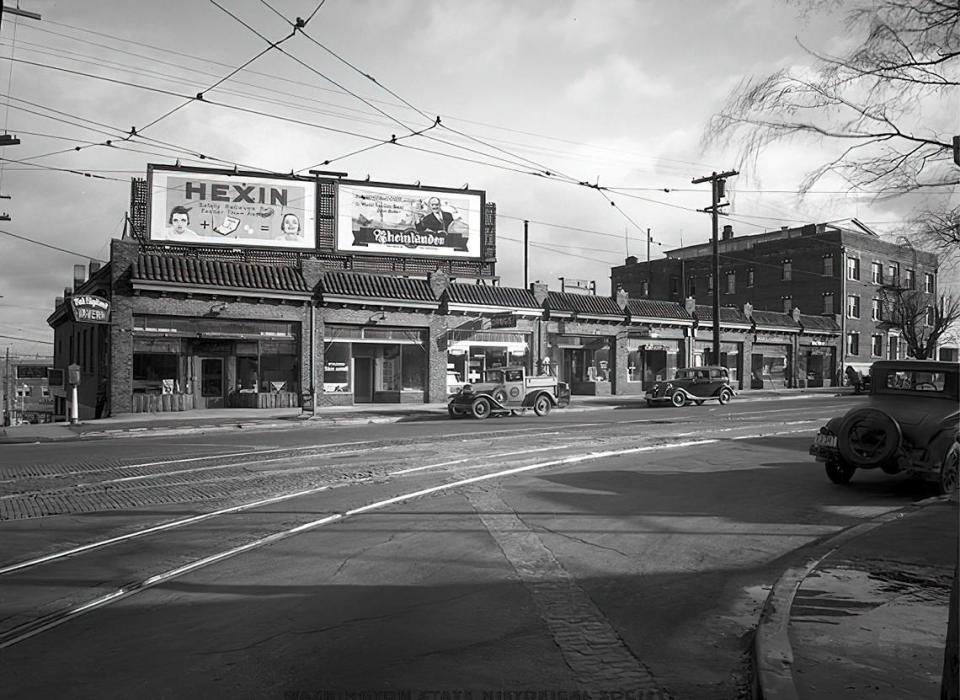A beloved diner? An iconic church? It’s been a bad week for Tacoma history | Opinion
It’s been a bad week — a miserable week, really — for anyone who cares about history in Tacoma.
On Wednesday, The News Tribune’s Kristine Sherred reported on the sad demise of the Harvester, a staple for no-frills diner fare in Tacoma’s Stadium District for as long as most can remember. Originally opened in 1930 as Scotty’s at the corner of Tacoma Avenue and North 1st Street, for the last 50 years the Harvester has been operated by the Tweten family in the same location. By email, Dan Tweten confirmed the restaurant’s closure, chalking up much of the business’ struggles to the seemingly endless cycle of Sound Transit Link light rail construction just outside the familiar front door.
“It’s certainly a sad day for us,” Tweten wrote via email, expressing a sentiment sure to be shared by generations of Tacomans.
Meanwhile, on Friday, another historically-significant bombshell dropped. This time, it was The News Tribune’s Craig Sailor reporting on what the future might hold for Holy Rosary Church, an iconic feature of Tacoma’s skyline for the last century.
As Sailor noted in his story, the Archdiocese of Seattle announced plans this week to sell the historic church on the edge of Interstate 5 — and its prominent 210-foot-tall steeple. A sale of the property, which has been closed due to safety concerns since 2018, could finally pave the way for the church’s demolition. In the face of potentially long odds, the local group Save Tacoma’s Landmark Church, which formed in an attempt to preserve the beloved place of worship when demolition was first proposed, has pledged to keep hope alive.
“That church belongs legally to the Archdiocese, but spiritually, morally, belongs to the Catholic community of Tacoma and more broadly, the people of Tacoma,” Jon Carp, one of the group’s leaders, told The News Tribune.
So what do a long-running greasy spoon and one of Tacoma’s signature historical buildings have in common? On one hand, not much, aside from the potential crossover of that after-Mass breakfast crowd. But in a broader sense, the back-to-back news stories also add to an unmistakable undercurrent of unease pulsing through a rapidly changing city.
The Tacoma we once knew is transforming, for better or worse. The diners and dives we grew up in are disappearing, and the landmarks we associate with home, in many cases, don’t feel far behind. Often, what replaces them can be viewed as an improvement— in the form of desperately needed housing or essential civic infrastructure, which is a tale as old as time. It doesn’t make it any less unsettling, however, even if change is inevitable, as we’ve been reminded a million times before.
But you know what? Some things are worth fighting for. Some pieces of Tacoma’s story do matter. And even if progress has a price, that doesn’t mean that the decisions and projects that will shape the city’s future are beyond criticism today.
More to the point? When a cherished landmark like the Harvester closes because the quest for a better city has made doing business impossible, that’s a failure — regardless of how you feel about the food or the necessity of mass transit. Is the Link light rail solely to blame for the restaurant’s downfall? Of course not. But anyone who thinks years of torn-up streets and construction delays in the heart of the Stadium District hasn’t played a significant role — or that there was no way to prevent such losses through direct city support and intervention — is fooling themselves. Saying so doesn’t make you a NIMBY. It makes you a keen observer of the obvious.
Likewise, the potential razing of Holy Rosary shouldn’t be dismissed as an unfortunate outcome that we’re powerless to prevent. Sure, the circumstances are far different; in this case, it’s not a massive transit project spurring the landscape-altering change, it’s the whims and rights of a Catholic parish that’s being forced to adapt to a changing reality. But that doesn’t make us mere bystanders, either. Tacoma has come together before to save historic buildings, whether it’s Union Station or Old City Hall. The key determinant? Deciding, collectively, as a city and a people, that we care, then putting our money and actions where our mouth is.
If anything, that’s the lesson here — and, fittingly, it’s one history provides a blueprint for.
It’s impossible to go back in time or prevent Tacoma from changing. It would be a silly, selfish goal anyway.
Still, that doesn’t mean we have to take everything that comes our way sitting down, because, sometimes, what’s at stake is more than a late-night diner or old building.
Sometimes, what we stand to lose are pieces of the city’s soul.
Sometimes, the right thing to do is hang on to what we have, while we still have the chance.

 Yahoo Sports
Yahoo Sports 

